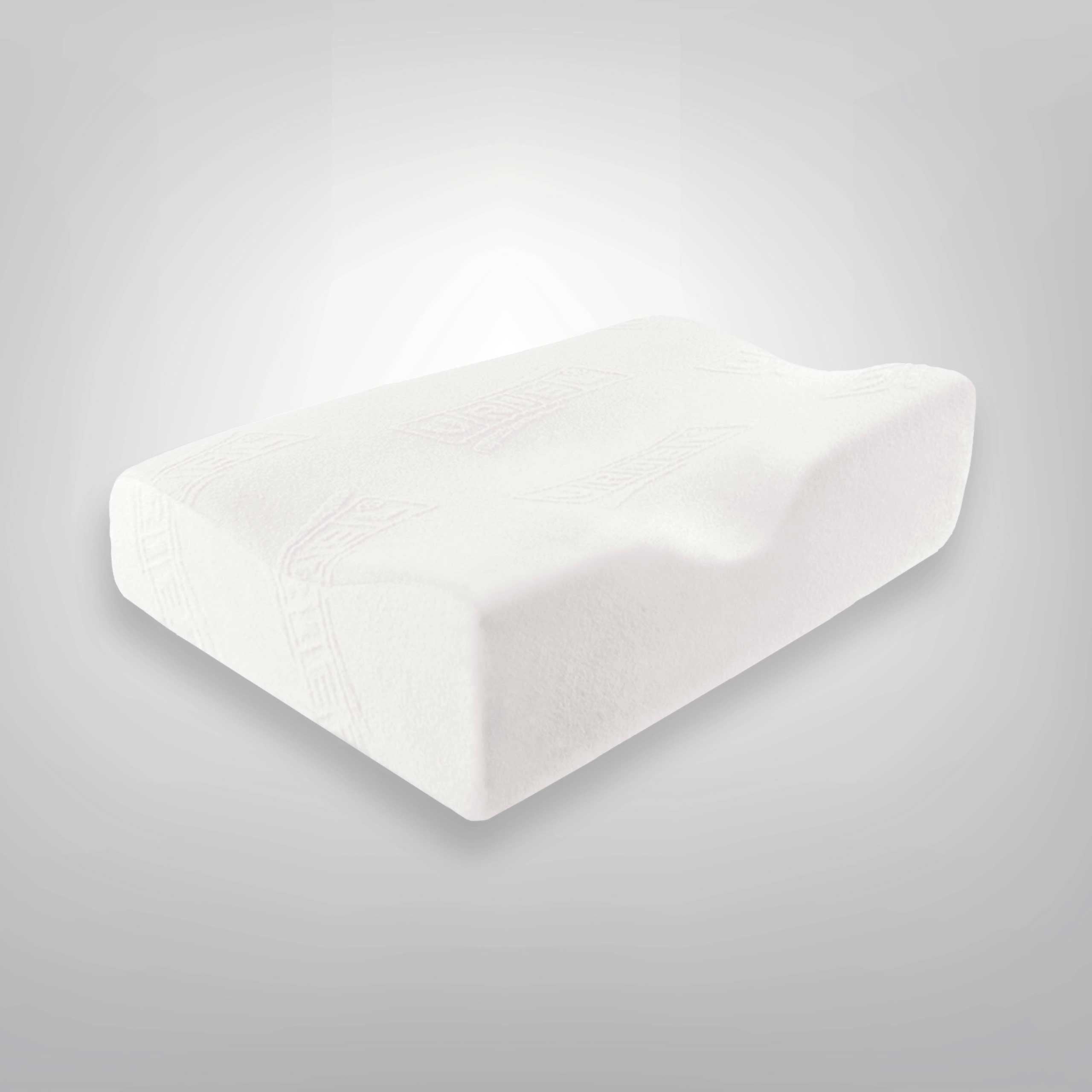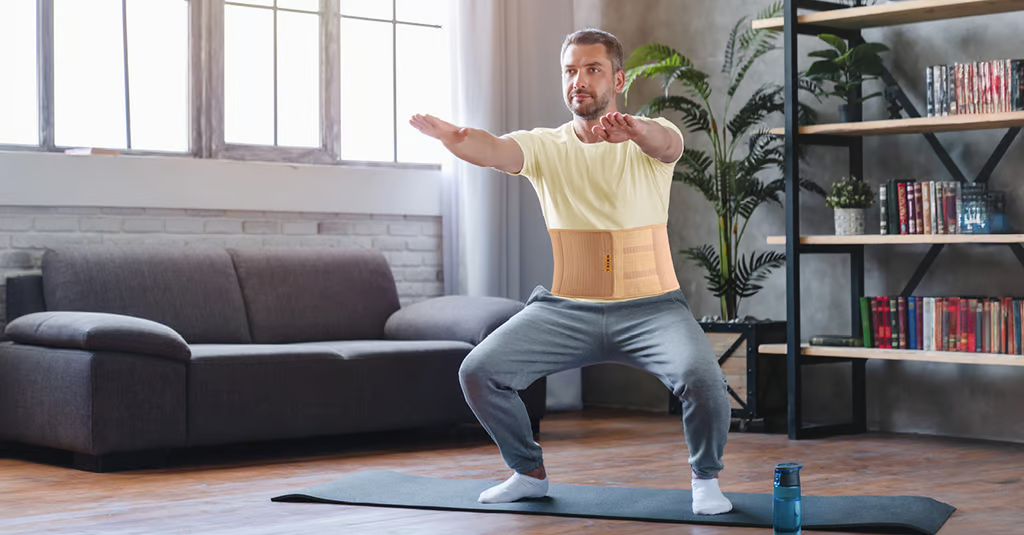


Orthopedic sleeping pillow | 67
Orthopedic sleeping pillow for maximum head and neck support
Anatomical polyurethane pillow with memory, manufactured using the injection molding method.
This advanced technology allows for precise design of the pillow into a unique anatomical shape, providing perfect support for the head and cervical vertebrae.
The pillow is adapted for comfortable lying on both your back and side, ensuring optimal pressure distribution for pain relief and quality, healthy sleep.
The pillow is made of anti-allergenic polyurethane.
The pillowcase is made of 100% cotton and elastic toweling fabric to get the full effect of the anatomical curves.
Size: Height 13 cm | Width 50 cm | Depth 33 cm
Special offer you'll love: Two orthopedic pillows for only 600 NIS
**The discount will be applied directly in the cart.

מידות
תיאור מורחב
Medical indications:
- Cervical Pain – Proper anatomical support relieves pressure from the vertebrae and reduces neck pain.
- Radiculopathy – arching the neck while lying on your back relieves pressure from the nerve and can relieve radiating pain to the hands.
- Snoring & Sleep Apnea – Sleeping on your side with elevated support may improve airflow and reduce snoring.
- Restless sleep or insomnia – customized head and neck support improves comfort and may help achieve deep, uninterrupted sleep.
- Fibromyalgia – Maximum comfort in sleep may relieve muscle tension and reduce sensitivity to pain
- Cervical Spondylosis – Reducing the load on the cervical vertebrae contributes to relieving pain and stiffness.
- Neck injuries and rehabilitation after trauma – an anatomical pillow provides optimal support during the rehabilitation process
- Postural Issues – Proper neck and head support contributes to maintaining proper cervical posture over time.
- Migraines and Cervicogenic Headaches – Reducing tension in the neck may ease the frequency and intensity of the pain.
הוראות שימוש
- Choosing the side of the pillow: The "Dream" has two ridges at different heights, visible when viewed from the side. You can use either side depending on your personal preference and sleeping comfort.
- For a restful and comfortable sleep: Place your head in the center of the pillow between the two high ridges on the edges. In this position, the pillow provides customized support for your head and neck when lying on your side or back.
- For those suffering from neck pain: It is recommended to sleep on your back with your head resting on the straight part of the pillow. This position tilts your head back slightly, allows for proper curvature of the cervical vertebrae, and relieves pressure from the nerves, which may relieve pain that also radiates to the hands.
- To relieve snoring: To improve breathing, it is recommended to sleep on your side, with your head resting on the high ridge. This position may allow for smooth airflow and reduce snoring.
- Adjusting to the pillow: It may take a few nights to get used to sleeping on this pillow. Keep using it even if it takes time to adjust, and within a few days you will enjoy comfort that is hard to give up.
- Sleep hygiene: In addition to using a pillow, it is recommended to practice sleep hygiene in accordance with the instructions of the National Sleep Foundation and the World Sleep Society.
The main recommendations for achieving good sleep are:
- Maintaining a regular sleep routine.
- Avoiding screens in the hours before bedtime.
- Limiting caffeine and alcohol consumption in the evening
- Creating a comfortable, dark, and quiet environment for sleeping
- Performing physical activity during the day (not near bedtime).
עצות המומחים שלנו
Medical indications:
- Cervical Pain – Proper anatomical support relieves pressure from the vertebrae and reduces neck pain.
- Radiculopathy – arching the neck while lying on your back relieves pressure from the nerve and can relieve radiating pain to the hands.
- Snoring & Sleep Apnea – Sleeping on your side with elevated support may improve airflow and reduce snoring.
- Restless sleep or insomnia – customized head and neck support improves comfort and may help achieve deep, uninterrupted sleep.
- Fibromyalgia – Maximum comfort in sleep may relieve muscle tension and reduce sensitivity to pain
- Cervical Spondylosis – Reducing the load on the cervical vertebrae contributes to relieving pain and stiffness.
- Neck injuries and rehabilitation after trauma – an anatomical pillow provides optimal support during the rehabilitation process
- Postural Issues – Proper neck and head support contributes to maintaining proper cervical posture over time.
- Migraines and Cervicogenic Headaches – Reducing tension in the neck may ease the frequency and intensity of the pain.
- Choosing the side of the pillow: The "Dream" has two ridges at different heights, visible when viewed from the side. You can use either side depending on your personal preference and sleeping comfort.
- For a restful and comfortable sleep: Place your head in the center of the pillow between the two high ridges on the edges. In this position, the pillow provides customized support for your head and neck when lying on your side or back.
- For those suffering from neck pain: It is recommended to sleep on your back with your head resting on the straight part of the pillow. This position tilts your head back slightly, allows for proper curvature of the cervical vertebrae, and relieves pressure from the nerves, which may relieve pain that also radiates to the hands.
- To relieve snoring: To improve breathing, it is recommended to sleep on your side, with your head resting on the high ridge. This position may allow for smooth airflow and reduce snoring.
- Adjusting to the pillow: It may take a few nights to get used to sleeping on this pillow. Keep using it even if it takes time to adjust, and within a few days you will enjoy comfort that is hard to give up.
- Sleep hygiene: In addition to using a pillow, it is recommended to practice sleep hygiene in accordance with the instructions of the National Sleep Foundation and the World Sleep Society.
The main recommendations for achieving good sleep are:
- Maintaining a regular sleep routine.
- Avoiding screens in the hours before bedtime.
- Limiting caffeine and alcohol consumption in the evening
- Creating a comfortable, dark, and quiet environment for sleeping
- Performing physical activity during the day (not near bedtime).
בלוג

Treating Lower Back Pain: 6 Tips to Improve Quality of Life
Suffering from lower back pain? You are definitely not alone. There are many ways to deal with one of the most common pains in the world, here are some of them. It's time to relieve the pain.

The Secret to a Healthy Back: The Complete Guide to Improving Posture and Alleviating Back Pain
Is back health important to you? Get the 'Secret of a Healthy Back' guide containing information, tips and useful advice for relieving back pain. By Oriya Moran, Chief Physiotherapist Download t...

Kinesio tape or professional elastic bandage?
Suffering from sports injuries, bruises or simply pain caused by medical problems? Get to know the variety of dressing products that will support you. When should we use kinesiology tape and why d...
